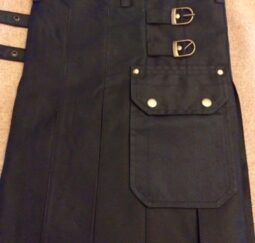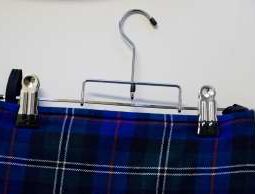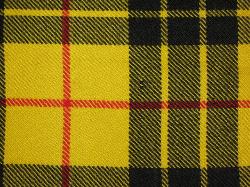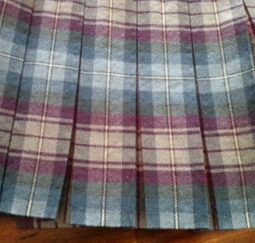$0.00
Hand Sewn Kilts
Out of stock
When shopping for a hand sewn kilt, you have to be aware of the numerous sites that market kilts as “hand sewn”, technically , this could include any amount of hand sewing on the kilt, or perhaps this could be interpreted as the kilt being manipulated through a sewing machine with “hands”. You should ask questions before you purchase a “Hand Sewn Kilt”, – Where is the kilt made? – Is a sewing machine used on the kilt at any time? Every kilt that I sew is custom made to your measurements and specifications, in the tartan of your choice. The tartan fabric can be pleated to the stripe or to the sett, which reproduces the tartan pattern. I use 100% wool imported from Scotland. The mills weave with a clean selvedge, which is so important for the bottom edge of the kilt. D.C.Dalgliesh is the last to weave with traditional shuttle looms that produce the best selvedge of all, and I highly recommend their kilting fabric. Lochcarron, House of Edgar,Strathmore and Marton Mills are very good mills, as well. For Welsh Tartan I recommend Cambrian Woolen Mills in Wales. I recommend tartans that are woven in a range of weights from Medium Weight (13-14 oz) to Heavy Weight (15-16 ounce). For a kilt, most people choose Heavy weight, which gives the ideal balance of warmth, pleat crease-retention, durability, swing, and ease of wear. I use high quality thread, lining and canvas to insure the durable construction of the kilt. I make knife pleat and the oldest form of the modern kilt, the box pleat.
Kilt Specifications: I make my kilts with two buckles and celtic embossed straps , I can add the third strap if you wish.I find the kilt hangs better with two straps, but this is a personal preference Belt loops Triple fringe, can be made as a single,double or the oldest version which is no fringe at all. 10 oz canvas support Lining, cotton/polyester for the men, and a nice satin blend for the ladies 100% wool from excellent mills 100% hand sewn by me. I also include matching flashings, a heavy duty kilt hanger with my kilts. If you are in Saskatoon or will be in Saskatoon, I would prefer to take your measurements myself. If this is not possible I will send you a measurement guide and go over it with you. This is the information that I will need for your kilt order: Your name, email, phone number and mailing address. Type of Kilt required,Knife Pleat or Box Pleat Tartan desired and fabric weight Pleating choice : to sett or stripe Your measurements. I’ll check the tartan availability and the estimated price.Most tartans are in the $40 to $80 range per yard. I’ll give you an estimate of when I can finish the kilt for you. I sew in the order of when the kilt order was placed and the kilting fabric received. If you need your kilt for an event, please let me know the date. Before ordering the tartan fabric, I will need a 50% deposit from you. You can pay by check or use Paypal.If you have your own fabric, I can make a kilt for you and let you know the labor cost. During the making of your kilt, I will keep you informed as to the progress, and I can send pictures of your kilt during the process if you wish. When your kilt is finished, I will need payment of the balance due and will send the kilt. To place an order, or if you have any questions or need help, please go to the “Contact Me” page for my contact information. You can also call me at 306 260 1286.
Fitting the KIlt The question of how the kilt should fit is very important and is often overlooked by both new kilt wearers and those who have worn the kilt for years. There is a trend today to wear the kilt with a short or no rise. This means that the kilt is worn as the trousers are, down around the waist near the hips. None of the kilt protrudes above the beltline. This is comfortable for shorter, thin-framed men, but is unsuitable for tall or heavy-set men. Furthermore, the kilt is intended to be worn with the upper portion protruding above the beltline. In fact, the top of the kilt should rise high enough to come to the wearer’s bottom ribs. For the average man, this will be a rise of one-and-one-half to two-and-one-half inches above the belt line. For very tall men it can rise as much as three to four inches above the beltline. Highland dancers and Scottish country dancer often ask for a very high rise so that when they raise their hands above their heads, tartan is still seen instead of a white shirt front. When ordering a kilt explain how far you want the top of you kilt to rise above the belt.
Manufactured by: The Kilt Lady
Additional information
| Weight | 0.00 kg |
|---|---|
| Dimensions | 0.00 × 0.00 × 0.00 cm |




